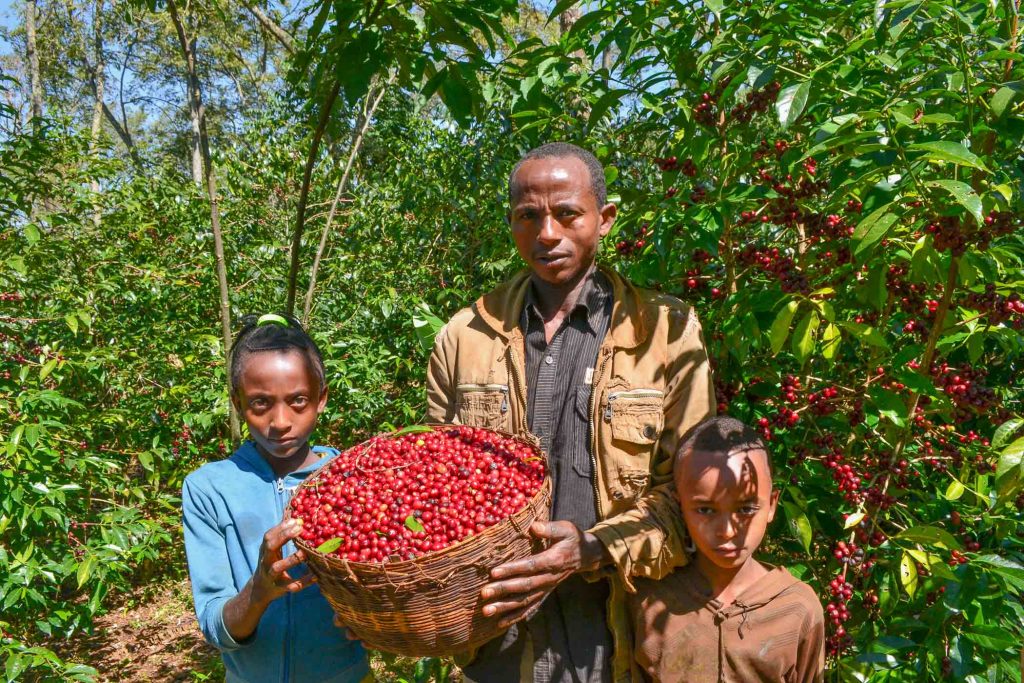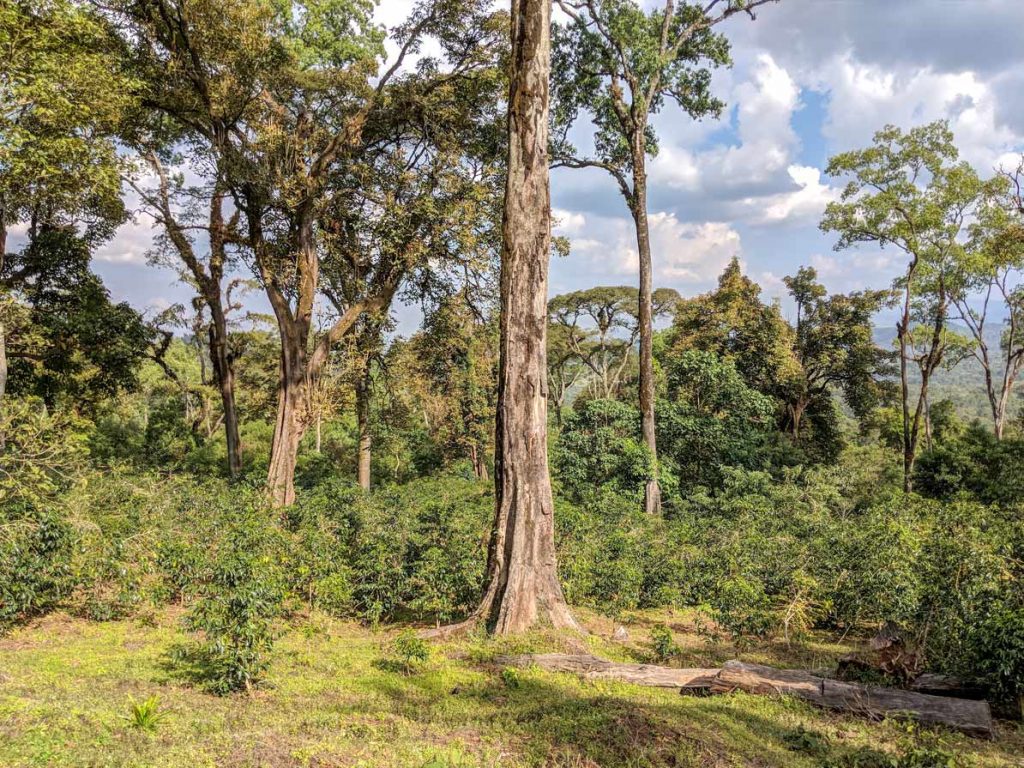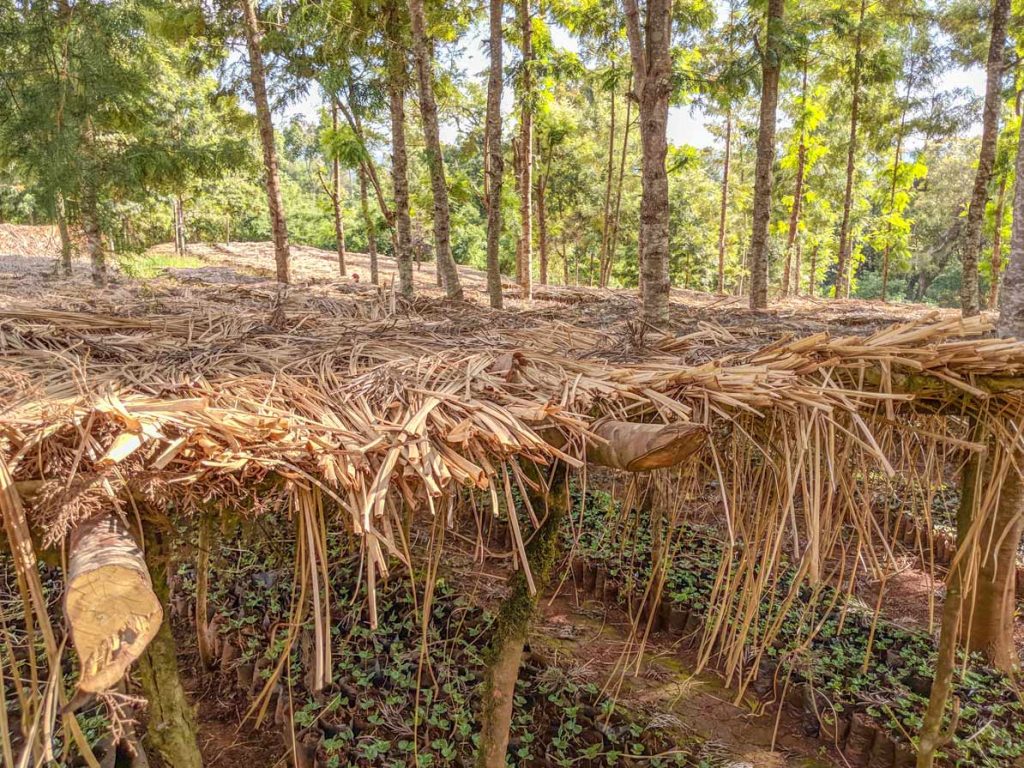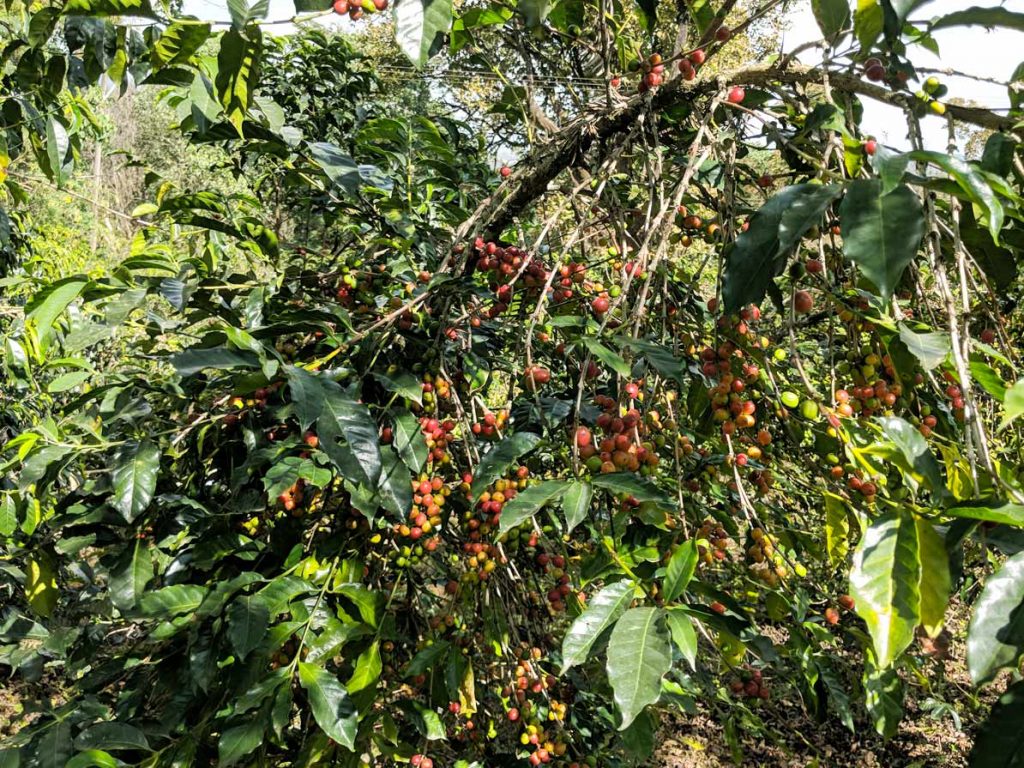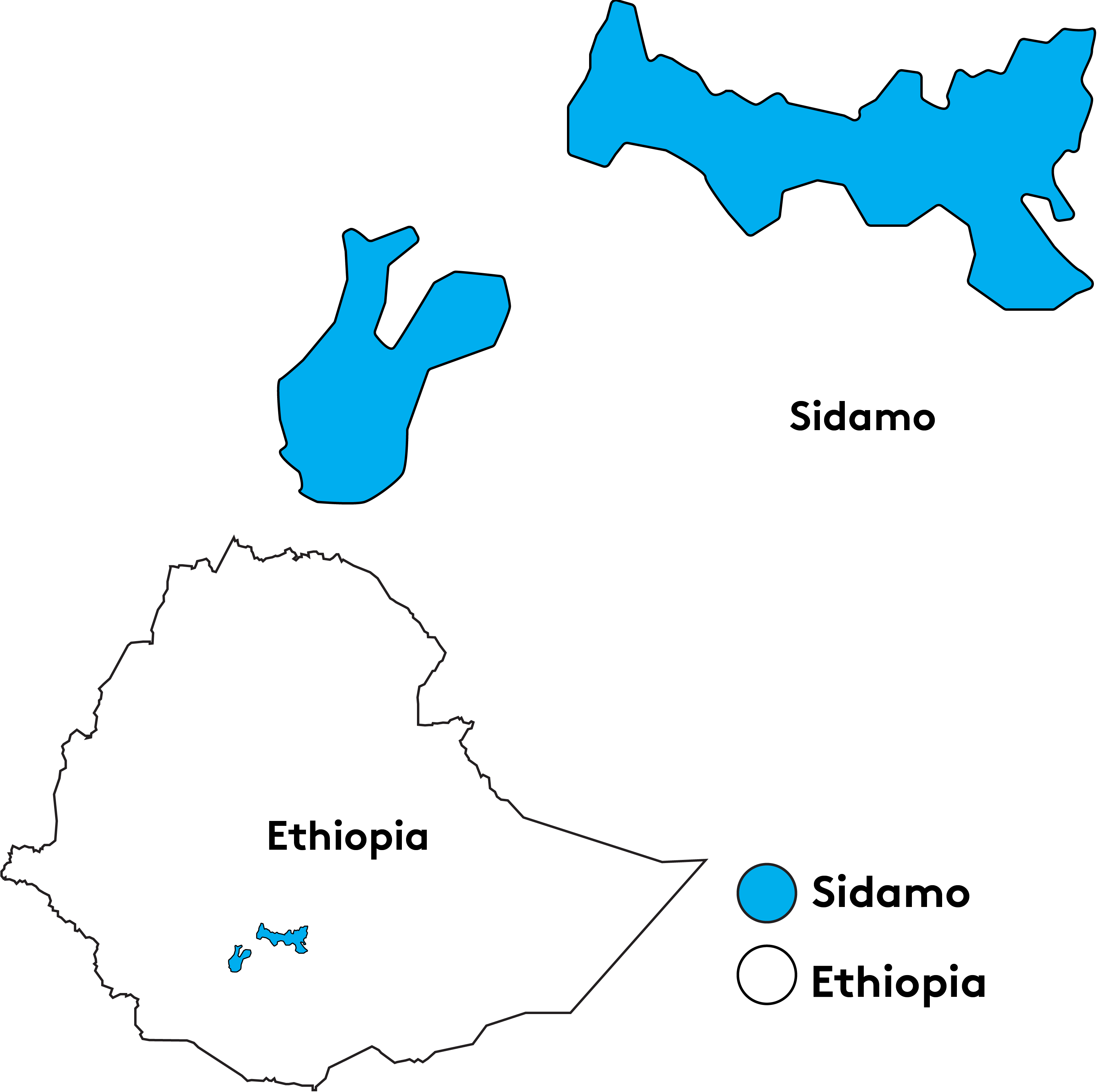Named for Ethiopia’s national tree, Ally’s Acacia Core Coffee comes from smallholder farmers in the Sidamo region. The sweet, fruity profile of the Ethiopia Acacia Natural is a classic representation of one of Ethiopia’s most recognized coffee producing areas.
Our Core Coffees reflect the work of whole communities, and the Ethiopia Acacia Natural is produced by the smallholder farmers who characterize the coffee production landscape of Ethiopia. Sidamo encompasses many terroirs, but farming across the region is traditionally low input and the attributes of the plants and the land are captured in every harvest.
In the southern region of Ethiopia, farmers pick coffee selectively, harvesting only ripe cherries individually by hand. Pickers rotate among the trees every eight to ten days, choosing only the cherries which are at peak ripeness. Natural processed coffee is transferred directly to raised drying beds. The ripe cherries are turned constantly as they dry in the sun. Learn more about coffee varieties of Ethiopia, including the Kurume, Dega, and Wolisho in the Acacia.
Acacia is prepped for export at Tracon Trading’s coffee cleaning and storage plant on 30,000 sq meters of land in Addis Ababa. The plant is equipped with modern Pinhalense coffee processing machines and a Buhler Z+ color sorter. The machine has the capacity of processing six tons per hour. All the processing jobs are mechanical and electronic including final hand picking on conveyor belts. The six storage silos of the plant have a capacity of accommodating about 15,000 metric tons of coffee at a time. The warehouses are clean, with ample lighting and ventilation, which are very ideal for keeping the quality of the coffee.
This coffee was decaffeinated using the Swiss Water process, which which follows several steps. Coffee is cleaned of the silver skin and transferred to tanks where it is soaked in clean water. During this pre-soak stage, coffee beans expand by 100%, preparing them for caffeine extraction. In the third step, low-caffeine green coffee extract (water saturated with soluble green coffee compounds) flows into the coffee tanks, beginning the counter-current extraction process. The green coffee extract has caffeine levels just below that of the green coffee. By adjusting time, temperature, and flow the process migrates the caffeine from the coffee into the green coffee extract. This process is repeated several times as the percentage of caffeine in the green coffee decreases.
Finally, coffee is dried using an evaporative process where the moisture is converted to vapor and removed through an air exhaust stream. The green coffee extract, now rich in caffeine, moves to a special carbon filtration system to remove the caffeine to use the green coffee extract for the next round of decaffeination. The process takes around ten hours.
Read more about our Core Coffee program.
